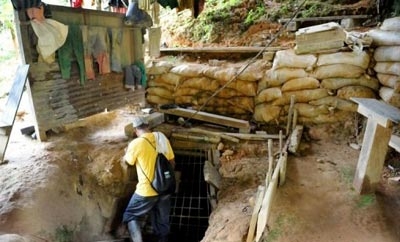A letter obtained by Colombian media has shed light on the extent to which the country’s oldest guerrilla group, the FARC, extorts the mining industry.
The letter, printed by Caracol Radio, is dated October 14, 2011, and is purportedly from the guerrilla’s senior commander Felix Antonio Muñoz Lascarro, alias “Pastor Alape” to then-leader Guillermo Leon Saenz Vargas, alias “Alfonso Cano,” and Luciano Marín Arango, alias “Ivan Marquez,” who is currently leading the rebels’ negotiating team at peace talks in Cuba.
The language of the note is unclear, but outlines a structure in which miners are forced to pay 5 percent of their total income to the FARC, 5 percent to guerrilla group ELN, as well as 7 million pesos ($3,800) to the FARC for the entrance of each mechanical digger to a mining site. The owner of the land a mine is situated on receives 15 percent of total profits, according to the letter, and the landowner must give the FARC 25 percent of that. The workers that operate in the diggers and that carry their fuel also pay small contributions.
InSight Crime Analysis
Extortion was FARC’s original money earner and remains a primary source of income, with the guerrillas estimated to make around $90 million a year from the crime, according to a recent El Tiempo investigation. Mining, predominantly illegal mining, has become increasingly important to the rebels, with illegal gold mining overtaking coca production as their main source of income in eight of Colombia’s 32 provinces, according to a 2012 report by Spanish conflict-analysis organization the Toledo International Center for Peace.
Police estimated in 2011 that illegal mining and criminal groups converged in 151 muncipalities of 25 provinces, according to a recent report by Semana magazine, which cited the boom in Colombia’s mining industry during the last three years, institutional weakness, and the unregulated nature of much of the sector as reasons it attracted so much criminal activity.

